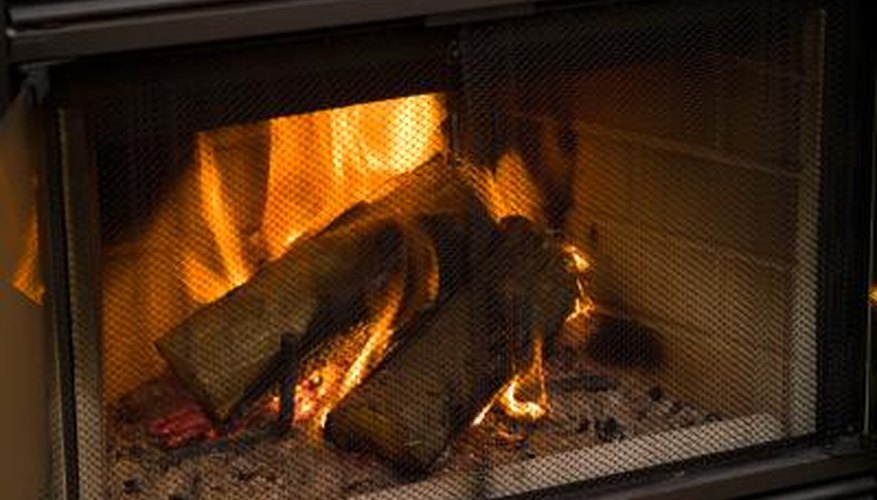Blocking a fireplace can significantly bring down the value of your home, but if the fireplace is not in working order and cannot be repaired, it may be in your best interest to block it. There is no need to hire someone to block your fireplace for you, however. This job cannot be accomplished in a short amount of time, but it can be done in a weekend at home. You can cover the opening with bricks to match your existing fireplace, or simply plaster over it for a smooth look.
Bricks
Remove the fireplace surround. This is the wood, metal or tile around the opening of the fireplace. Surrounds are typically attached with screws or lug nuts. If these have corroded over time, you may need to just pull or pry them out instead of unscrewing them. Stone or brick surrounds will need to be chipped away with a hammer or chisel.
Measure the fireplace's opening. Measure using square metres if you plan on using bricks to fill the hole.
Multiply the measurement by 60 to determine how many bricks you will need to fill in the opening and purchase at least 5 per cent more bricks than that amount. Make sure that one of those bricks is an air brick to allow for ventilation in your chimney.
Mix your cement according to the package's directions.
Apply a thin layer of cement to the bottom of the brick with a trowel. Lay the brick on the floor of the fireplace, flush with the front of the fireplace. Press it down so the cement oozes out just a bit under the brick. Wipe away the excess and repeat with another brick. Apply cement in between each brick in the same way; the bricks should be flush against each other, except for the thin layer of cement.
Add a second layer on top of the first. Be sure to place the air brick in the second row with the holes facing out to the room.
Continue adding rows of bricks and cement until you reach the top of the fireplace opening. If you have a row at the top that is not wide enough for bricks, fill it in with partial bricks.
Cover the bricks with plaster to match the walls in the room, if you wish. You can plaster over the entire fireplace and chimney. Mix the all-purpose plaster with water until it is a runny consistency. Apply it with a plasterer's trowel, scraping it over the bricks until they are completely covered.
- Remove the fireplace surround.
- Measure the fireplace's opening.
- Apply it with a plasterer's trowel, scraping it over the bricks until they are completely covered.
Plasterboard
Build a frame just inside the fireplace opening using 5 x 5 cm (2 x 2 inch) wooden boards.
Cut plasterboard to fit the fireplace opening exactly. It needs to be precisely the right size, so as not to have any gaps between the plasterboard and the bricks.
- Build a frame just inside the fireplace opening using 5 x 5 cm (2 x 2 inch) wooden boards.
- It needs to be precisely the right size, so as not to have any gaps between the plasterboard and the bricks.
Screw the plasterboard to the wooden frame, placing the screws 15 to 20 cm (6 to 8 inches) apart. It should be even with the bricks or wall just next to it.
Cut a hole near the bottom of the plasterboard the size of the ventilator plate you have purchased.
Press the ventilator plate into the hole and screw it in tightly.
Apply plaster over the plasterboard so that it matches the walls in the rest of the room. Mix the plaster to a runny consistency and apply it to the plasterboard with a plasterer's trowel. After the plaster dries, paint over it to match the walls.
Fit a chimney cowl to the chimney at the top. Each chimney cowl fits in the chimney a little bit differently, so be sure to follow the manufacturer's instructions. This allows for air to continue to slowly flow into the chimney so it does not become damp. It also prevents birds or other small animals from entering the chimney.
